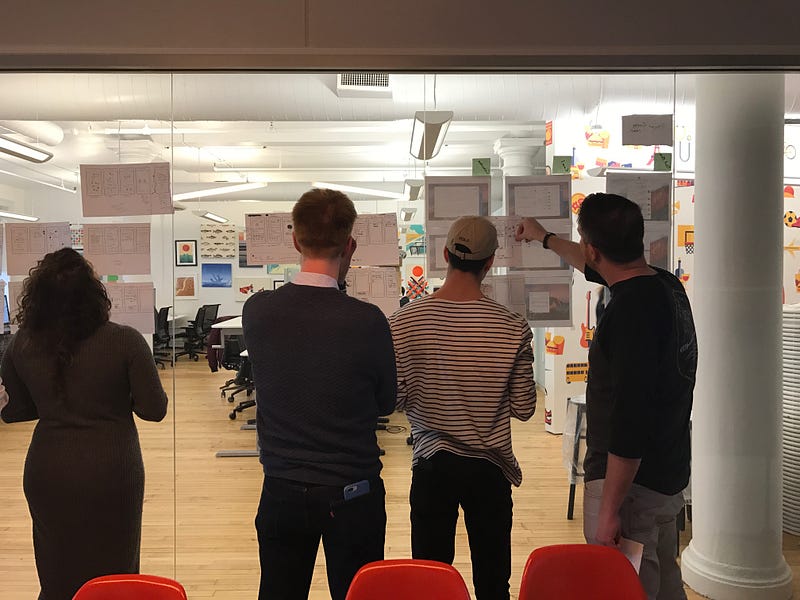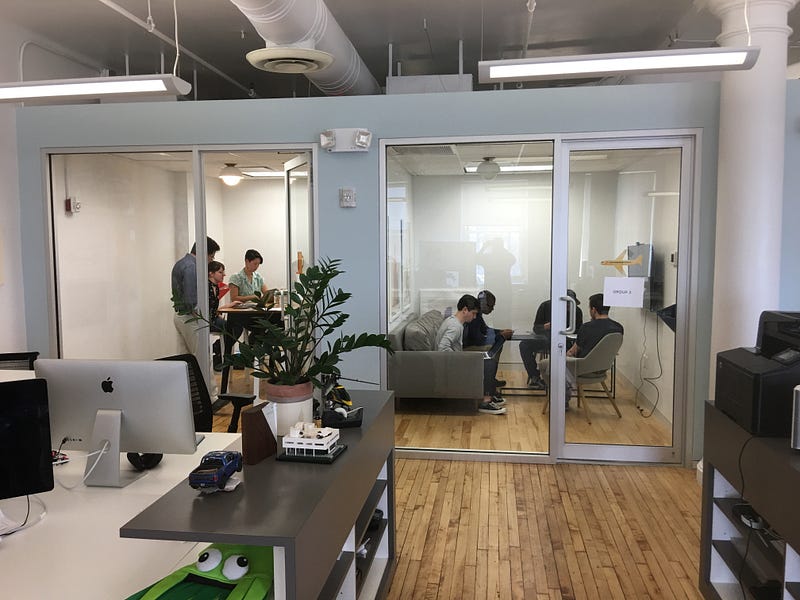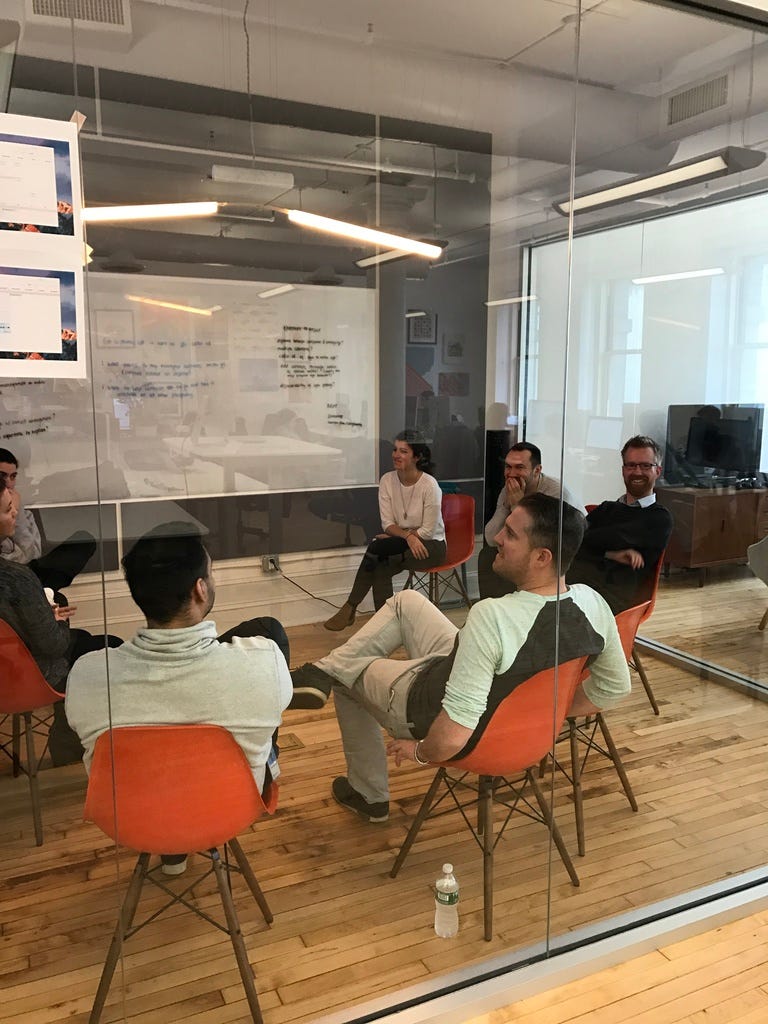Improving Microsoft’s team collaboration (and Outlook) with design sprints
Alice Default is a Design Producer within Microsoft’s Outlook Mobile team. Her mission is to build a better email and calendar experience on iOS and Android. However, where does one begin to rethink a product that’s 20+ years old and being used by millions of people around the world? And to make matters more challenging, not only do people highly customize Outlook based on their own needs and behaviors, but many of Microsoft’s larger customers have customized versions of Outlook running within their organizations.
Needless to say, this makes UX and design thinking practices like user persona development, jobs-to-be-done, problem framing, and user interviewing… hard.
But Alice found a compelling solution several months back when she began exploring design sprints — the 5-day design thinking framework developed and battle-tested by Jake Knapp and the team at GV.

Alice sat down with us to talk product development, email, and design sprints.
Jay: Why did you decide to join the Microsoft?
Alice: Thanks to a chance encounter! A couple of years ago, I went to a talk by the co-founder of Sunrise, a calendar app for desktop and mobile. Sunrise had just been acquired by Microsoft and they were hiring to grow the team. I had worked within the productivity suite before and I really liked their product and approach.
A few months after I joined, the decision was eventually made to merge Sunrise and Outlook. My team and I started working on the iOS and Android mobile applications for Outlook with existing teams from Microsoft. Overnight, Sunrise became an application used by millions of people around the world.
Jay: What kind of problems were you facing that led you to explore design sprints?
Alice: After our merger with the Outlook mobile team, we quickly realized that our biggest challenge would be that we didn’t know each other. We were spread out over 3 different cities across the country, most of us had never met in person yet, and we all came from very different work cultures.
Whenever we wanted to start a new feature, we always had a hard time getting everyone on board about scope, direction, or process. We would start a project and a few weeks into it someone would almost always realize we were missing something, or that we were headed in the wrong direction. Projects would drag on for months instead of just weeks. We started getting frustrated about our inability to move forward quickly and efficiently.
When I finally heard about design sprints, they seemed like the perfect solution. We could get everyone in one room, actually meet each other and work face-to-face. One week spent on one thing initially seemed like a lot of commitment for my team, but we quickly realized all of the resources saved in the long run.

Jay: What have been some of the challenges you’ve faced with your first sprints and how have you overcome them?
Alice: First of all, I had no idea what I was doing when I started out. When I ran my first design sprint, I had never been to one and the only things I knew about them were what I had read in GV’s Sprint book, or online. On top of that, no one else on my team knew what design sprints were, what they were for, or why we needed so many people to sit in a room for an entire week. I had to convince a lot of people that design sprints would be worth it.
When I started my first sprint, I was also nervous I would make a mistake. The book is so detailed (they have hour-by-hour schedules) that I knew I was going to forget to do something or mess up somewhere. With time and some outside help — I attended the New Haircut Design Sprint workshop after my second sprint — I realized that design sprints can be extremely valuable as well as adaptable to your team’s specific needs.
Jay: What kinds of projects have you run design sprints on?
Alice: We’ve ran design sprints for a lot of very different projects. For example, just recently we ran a sprint to rethink search and navigation inside of our apps — going from 4–5 bottom tabs to 3. We ran another sprint redefining our Contacts experience; e.g. what information is useful to the user? where should it be displayed? And next month we’re using a sprint to test a new partner integration we’re exploring.
Our rule of thumb is, if we want to implement a feature but no one can describe it accurately (or in the same way as everyone else), we’ll run a design sprint.
Jay: If you could get anyone in Microsoft into a sprint room for a week, who would it be and what you want the sprint challenge to be about?
Alice: There’s so many projects you could run design sprints on and so many people you could invite at an organization as big as Microsoft.
But I think I would actually get my team in the room and take a week for us to figure out better internal tools for us to support ourselves daily. We spend most of our time working on user-facing features and fixes. But I also think it’s good from time to time to take a step back and ask ourselves not only what we can do, but also how we can do it better.

Jay: What kind of advice would you offer other designers and product managers who are trying to learn about and adopt design sprints into their teams?
Alice: Three things:
Don’t feel bad if your design sprint doesn’t go exactly as the book says.
Make sure you don’t have too many people in the room, but also make sure they’re the “right” ones. The worst thing is to get out of a design sprint and have to redo everything because you forgot to include someone essential to the project.
Have fun :)
Wrapping Up
Great advice, Alice!
It’s always encouraging to see large corporations adopting sprints. But in Microsoft’s case even more so because sprints brought together a product team from a startup with a product team from within an enterprise team. This goes to show the tremendous increases in collaboration and efficiency which can be achieved from implementing design sprints. It’s tempting for leadership teams to want to see an immediate return in terms of features launched, increased sales, and resources saved — all achievable with sprints. But the added benefits are all of the team & morale improvements that result.
We hope Alice’s story within Microsoft gives you and your team the conviction to try your first design sprint!
If you’re ready to give design sprints a shot, be sure to access all of the ready-to-use tools and templates inside our design sprint toolkit.


